11 March 2024
30+ Plants - how to add more plants into your diet
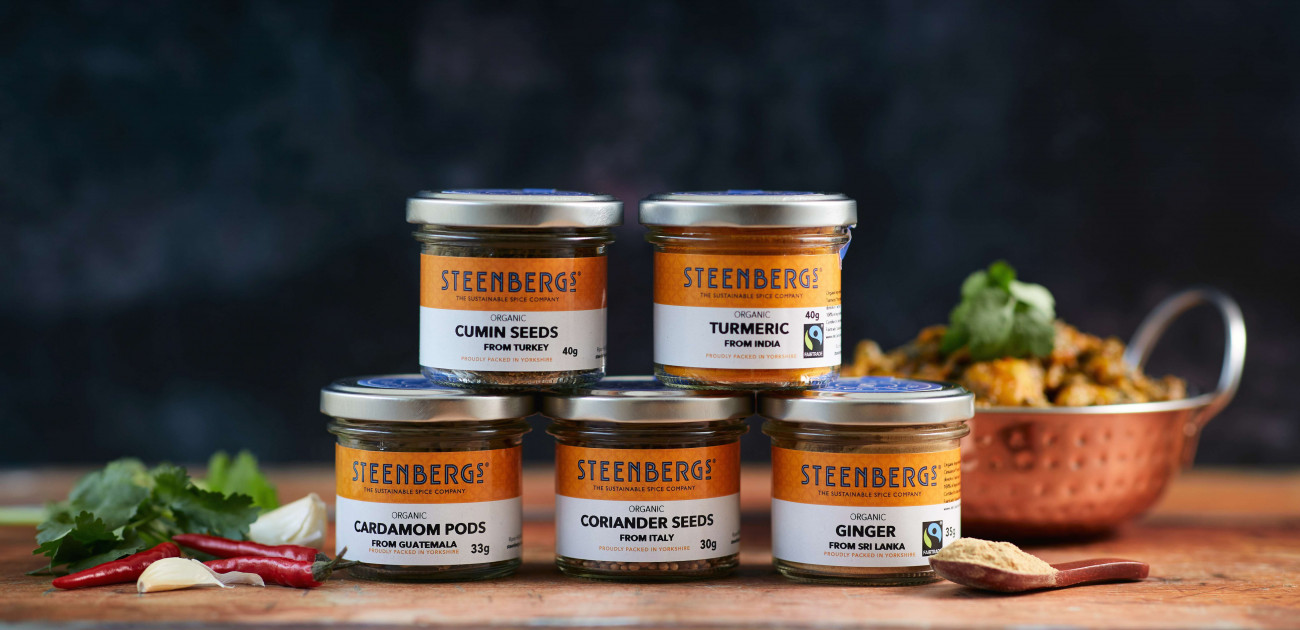
Variety is the spice of life or so they say and it’s certainly true of adding different plants to your diet. When we first came across the Tim Spector's 30 different plants a week it sounded a lot but once we started counting and actively choose to buy different varieties of potatoes, onions, apples, tomatoes etc it was reasonably easy. We always use at least 2 types of onion – red, brown, white, shallots and spring onions. White and red potatoes are easy enough to get hold of and we obviously have a cupboard full of spices!
Breakfast is homemade overnight oats or muesli which also allow you to add slightly different things each day in terms of different nuts, seeds, cinnamon, grated apple (different varieties), other fruit.
We’ve always been pro lots of variety in our diet and even when certain members of the family were eating meat, we never went for the hidden vegetables angle, they’ve always been an intrinsic part of our cooking and eating along with a varied number of spices and herbs. We cook in the evenings and lunches are also the majority of times made from left overs.
Experimenting with different spices and herbs or blends is a great way to switch it up. Sophie’s sandwiches and omelettes have always been a test of how many different ingredients you can add. She often adds turmeric, cayenne or paprika or maybe Italian herbs to an omelette, as well as a number of different vegetables.
We also use a wide range of pulses and beans and vegetables which we add throughout the week, using up everything at the end of the week in what we call a fridge meal, using up the odds and ends and left overs, these are all vegetable and pulse based - either as a soup, stir fry, vegetable casserole or roasted vegetable medleys. Frequently there are meals during the week that we can never exactly replicate although they will be on a theme. This means you can have a wide variety but not worry about food waste.
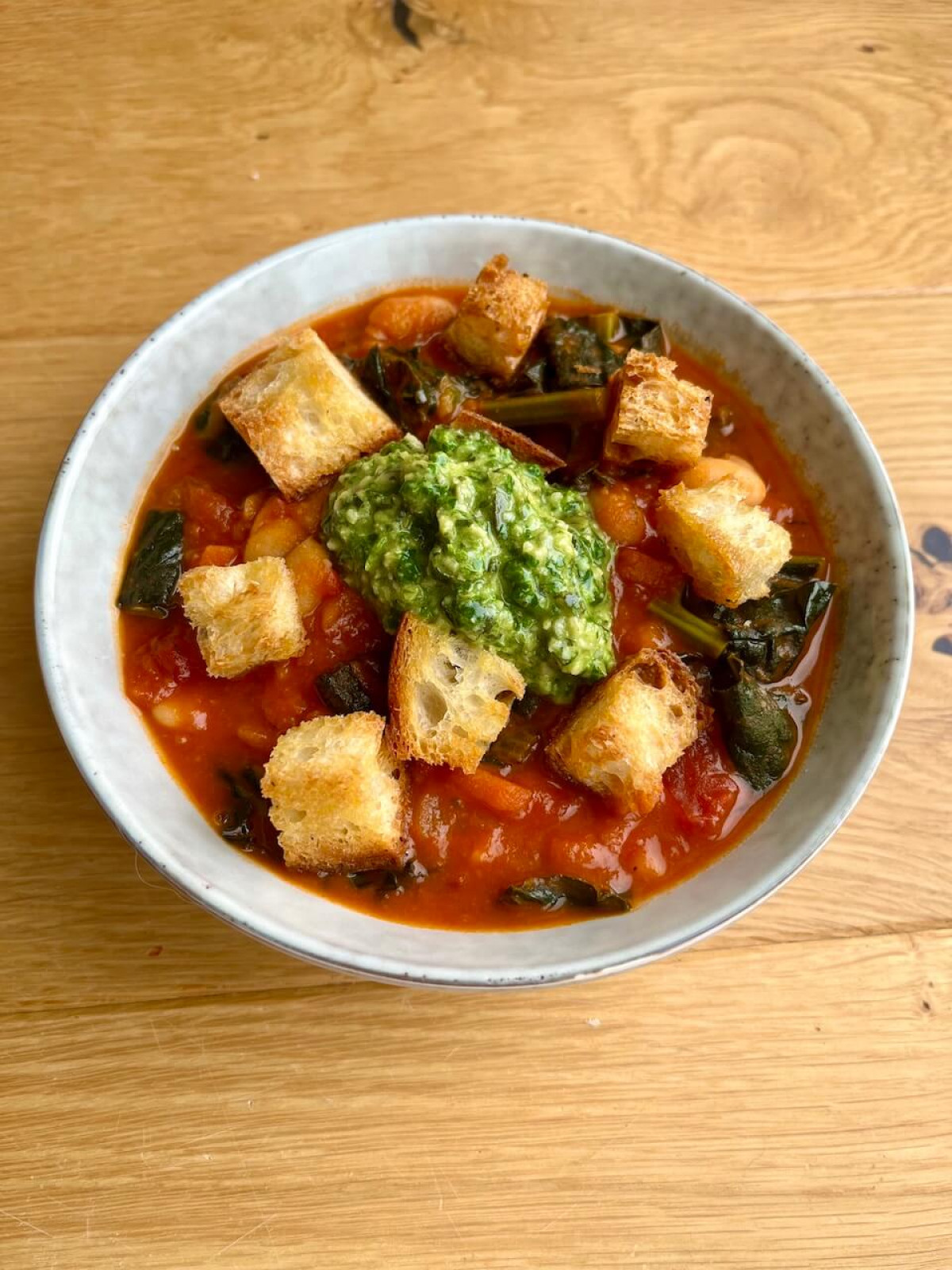 We eat a lot of curries and daals and this can also be a great way to add extra vegetable types and pulses, as well as spices to your diet.
We eat a lot of curries and daals and this can also be a great way to add extra vegetable types and pulses, as well as spices to your diet.
Do try out one of our favourite new recipes for Smoky Cannellini Bean Stew with Pumpkin Seed Pesto and Garlic Croutons. It's easy to make vegan or gluten free and is a great way to use up lots of leftover veg.
We also asked a few of our favourite chefs and food writers to give us their top tips too. We hope you find them useful.
- Sabrina Ghayour adds...
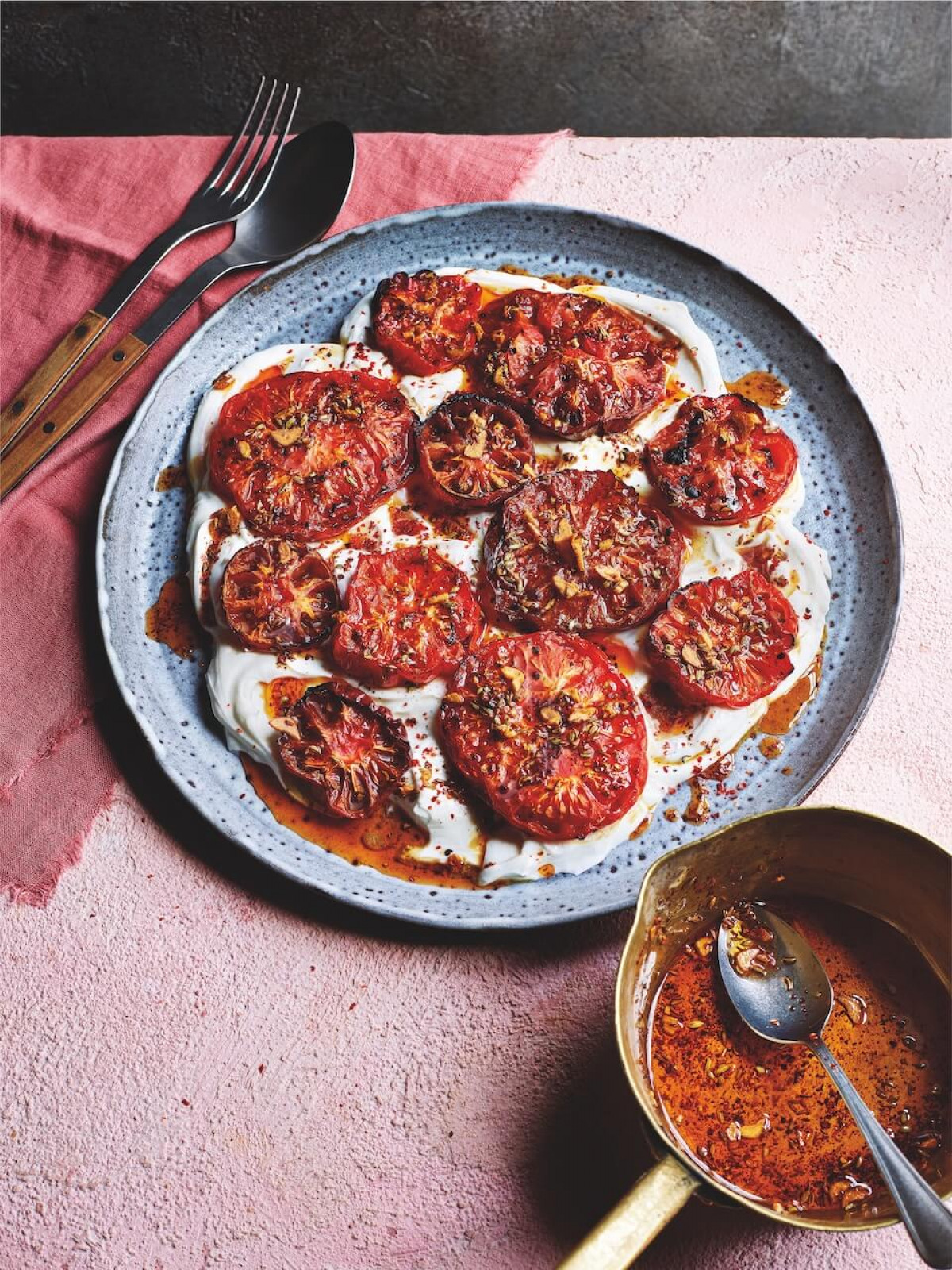 "I find myself eating less and less meat at home and I love making big soups for the family which I can pack vegetables into and flavour with spices and aromatics and everyone loves them. My other favourite is making vegetable fritters, like Bhajis, but I like to mix my vegetables and use onions, leeks, carrots, celeriac, butternut squash and sweet potatoes, marry them with lots of lovely spices and some chickpea flour and away we go!"
"I find myself eating less and less meat at home and I love making big soups for the family which I can pack vegetables into and flavour with spices and aromatics and everyone loves them. My other favourite is making vegetable fritters, like Bhajis, but I like to mix my vegetables and use onions, leeks, carrots, celeriac, butternut squash and sweet potatoes, marry them with lots of lovely spices and some chickpea flour and away we go!"
Why not try Sabrina's delicious roasted tomatoes with labneh and sumac spice oil...
- Suze aka Gourmet Glow is as conscious of reducing food waste as eating more plants...
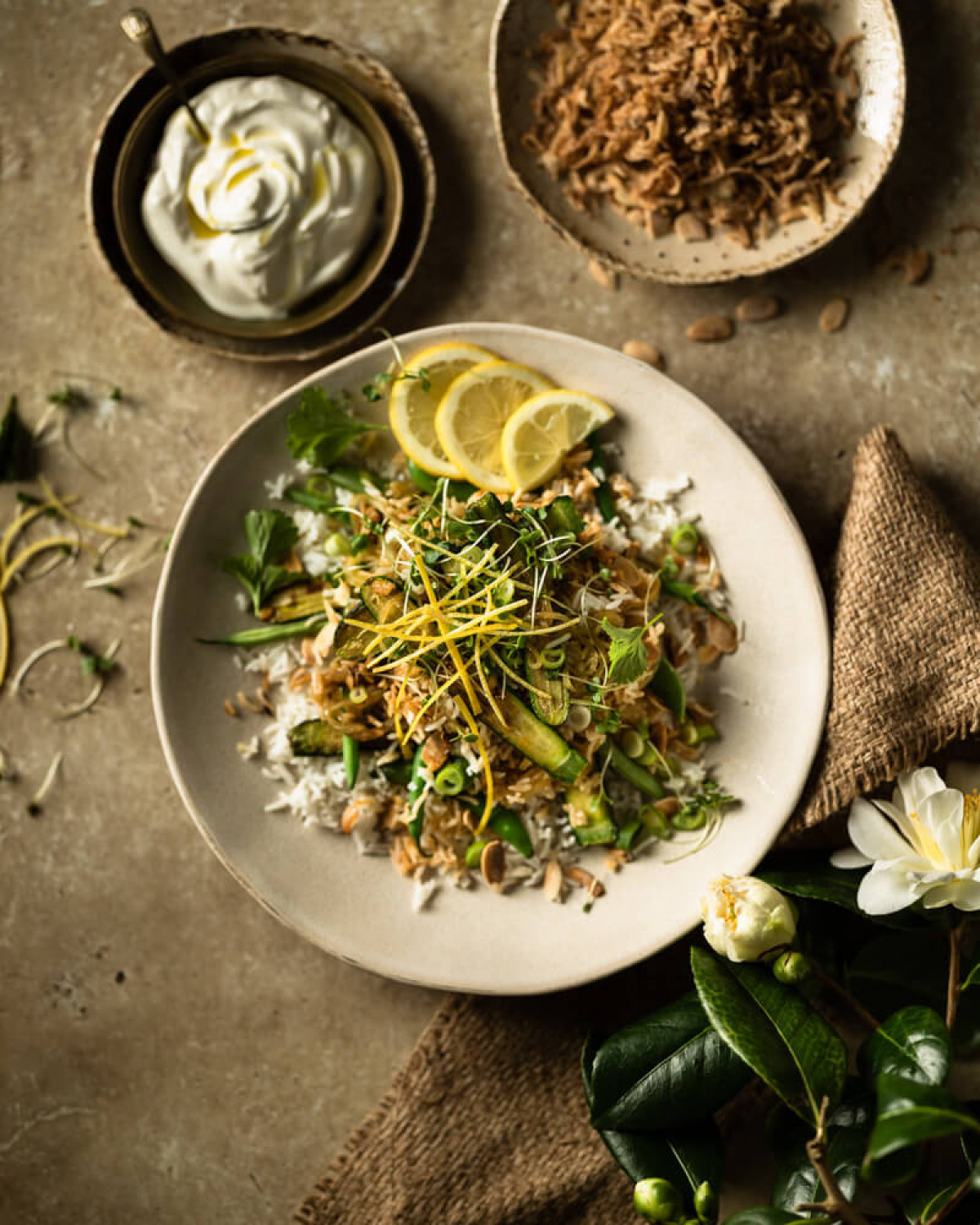 1. I always batch cook mixed seasonal vegetables, either steamed or roasted and mix through soy, a dash of maple and garlic. I keep them in a Tupperware in the fridge so they are an easy go to for rice, grains, noodles etc for quick snacks or easy meals.
1. I always batch cook mixed seasonal vegetables, either steamed or roasted and mix through soy, a dash of maple and garlic. I keep them in a Tupperware in the fridge so they are an easy go to for rice, grains, noodles etc for quick snacks or easy meals.
2. My freezer is never without frozen corn, peas and edamame. Never underestimate the versatility of frozen veg, even defrosted and blitzed into soups.
3. If I have any salad leaves that are beginning to wilt, I throw them into stews, stir fries, or my favourite: lettuce and pea soup.
4. I cut back on salt by using spices as seasonings, roast potatoes add great with Vadouvan, Baharat or Furikake. Meats and fish can be simply spiced with garlic and herbs with a dash of lemon or orange.
5. I keep my fridge stocked with chopped raw vegetables too, every meal I serve with a side salad simply dressed with olive oil and some acid, be it cider vinegar, citrus juice or verjus, balsamic is also a fave.
6. Any peelings from carrots, parsnips etc. I cook into crisps in the oven, they work really well with coconut aminos and a little smoked paprika.
Suze's Almond and Spring Vegetable Pilaf is a great way to eat plenty of plants...
- Nikibakes
"First thing I would say is to invest in a masala dabba as I’ve done for many years because it will naturally increase your uptake of spices as they’re usually placed right by the stove. Having them so close like that will make you more inclined to up your spice intake! And it doesn't have to be just Indian spices necessarily but rather your go to spices with a few extra new addictions so one can dip in gently to the spice world if they don't use many spices usually in their cooking.
Also, my go to swaps to increase my fruit, nut and seed intake:
Syrup - Homemade apple sauce
Sugar - Dates
Croutons - Paprika spiced pumpkin seeds
Hot sauce - Homemade Turkish chilli oil with Urfa chilli flakes and Pul Biber (Aleppo chilli flakes)
Sweets - Raisins and sultanas, apple and banana chips
Crisps - Vegetable peel crisps (waste not, want not)
Brownies - sweet potato brownies
Tea - masala chai
Spaghetti - Courgetti
Nutella - Nut Butter
Vegetable Oil - Coconut Oil
Also, check out Steenbergs spice blends as this will save you a lot of time and you'll be more inclined to use them in your cooking as oppose to blending the spices yourself.
You can find plenty of ways to naturally and easily increase your spice intake alone with fresh fruit and vegetables from my debut cookbook, Nikibakes' kitchen: https://found.us/creators/nikibakes "
Or why not try Niki's Pav Bhaji with 15 different spices and plenty of vegetables...
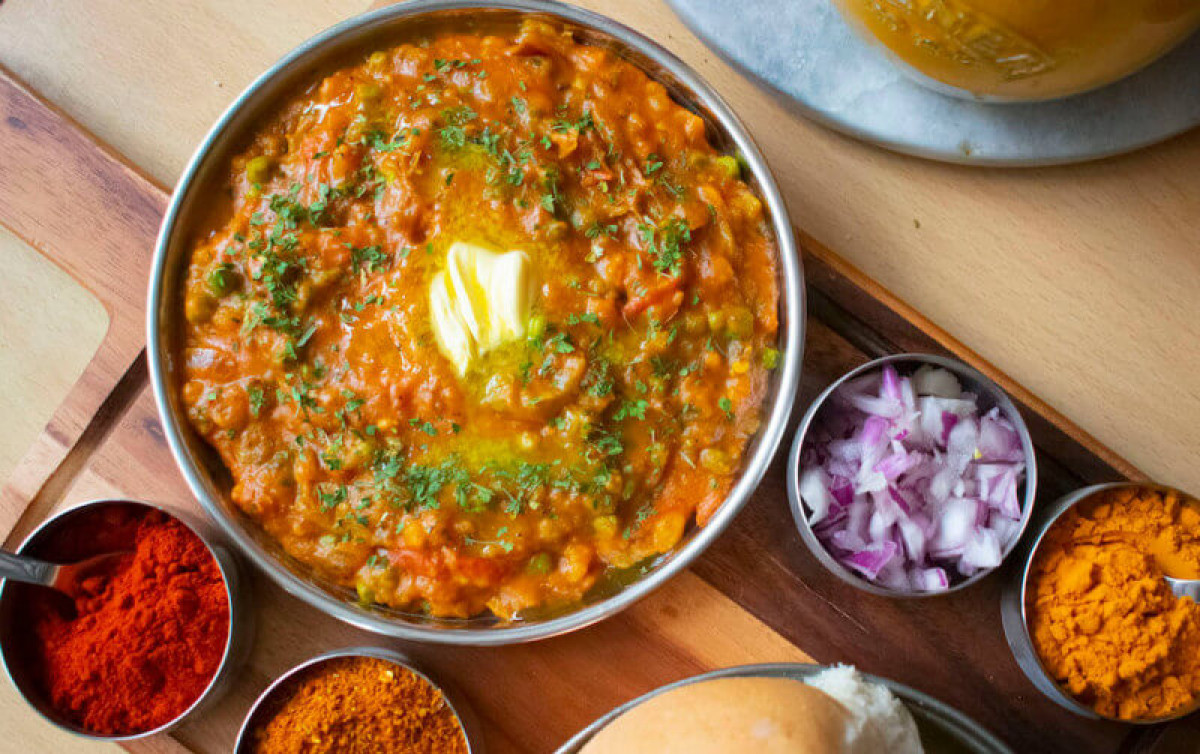
There's definitely plenty of inspiration out there and more on our recipe pages too.




